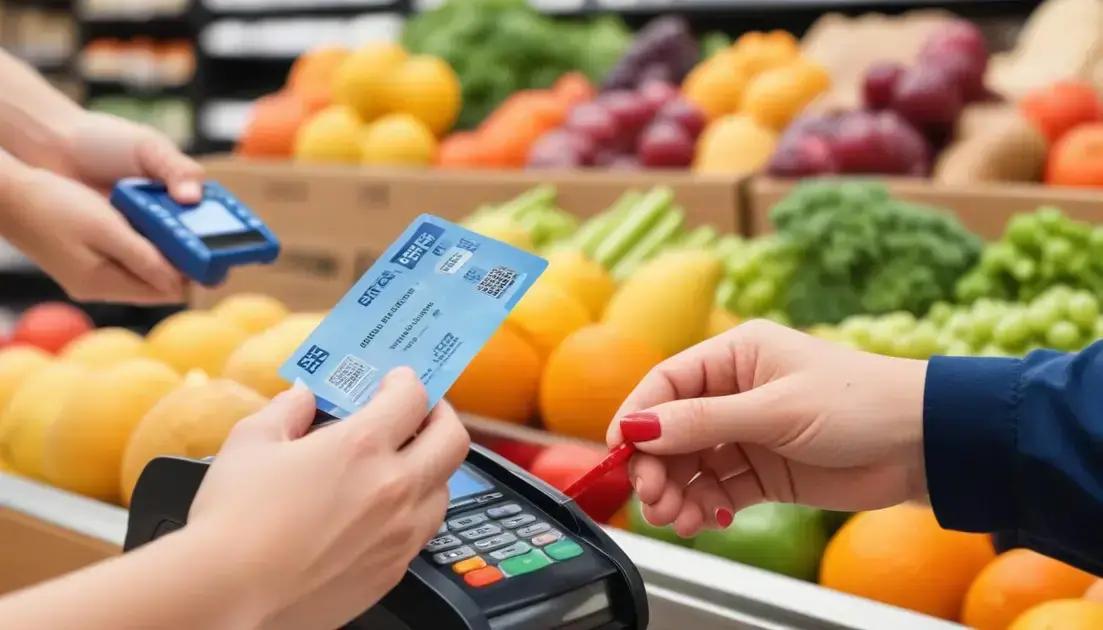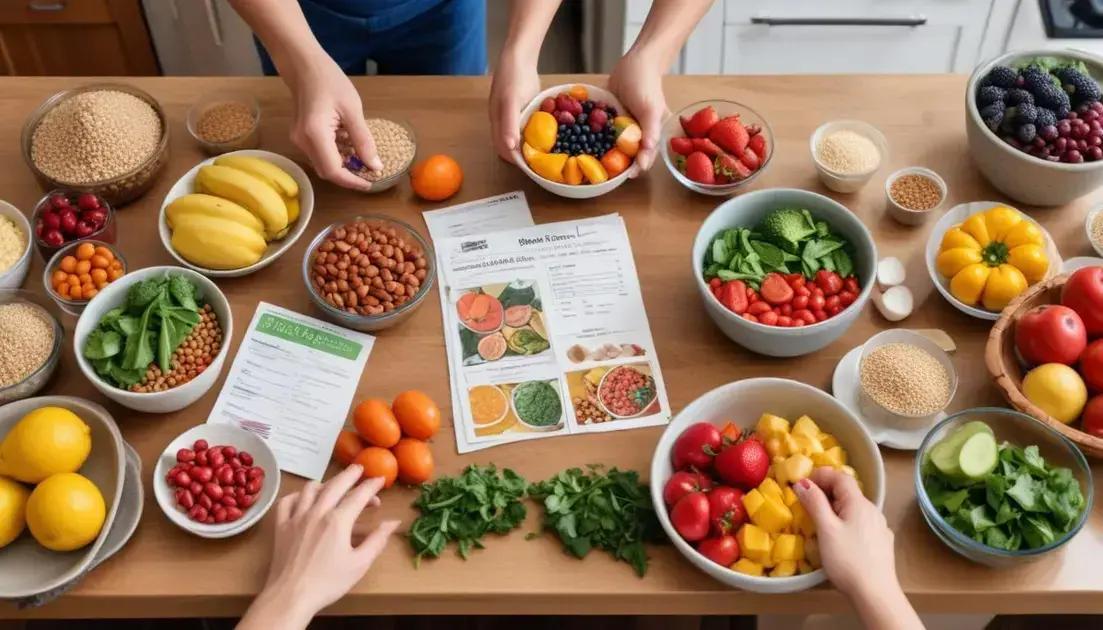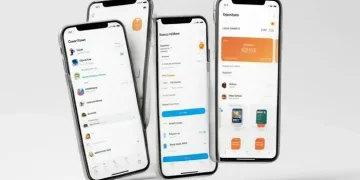Supplemental Nutrition Assistance Program (SNAP)

Struggling to afford groceries? The Supplemental Nutrition Assistance Program (SNAP) might be the lifeline you need. This federal program helps millions of Americans put food on the table—here’s how it works and how you can benefit.
What is the Supplemental Nutrition Assistance Program (SNAP)?
The Supplemental Nutrition Assistance Program (SNAP) is a federal assistance program designed to help low-income individuals and families buy nutritious food. Formerly known as food stamps, SNAP provides eligible participants with an Electronic Benefits Transfer (EBT) card, which works like a debit card to purchase groceries at approved retailers.
How SNAP Works
Funded by the U.S. Department of Agriculture (USDA), SNAP benefits are distributed monthly based on household size, income, and expenses. The program aims to reduce food insecurity by ensuring families can afford essential groceries, including fruits, vegetables, dairy, and proteins.
Eligible Food Items
SNAP benefits can be used to buy a variety of food items, such as bread, cereals, meats, fish, poultry, and even seeds for growing food. However, they cannot be used for alcohol, tobacco, vitamins, or hot prepared meals.
Many farmers’ markets and grocery stores now accept SNAP, making it easier for recipients to access fresh and healthy food options. Some states even offer incentives, like double-value programs, to encourage the purchase of fruits and vegetables.
The Impact of SNAP
Studies show that SNAP not only helps families put food on the table but also stimulates local economies. Every dollar spent through SNAP generates about $1.50 in economic activity, supporting jobs and businesses in communities across the country.
Who qualifies for SNAP benefits?
Eligibility for SNAP benefits depends on several factors, including income, household size, and expenses. The program is designed to assist low-income individuals and families who struggle to afford nutritious food. Most households must meet both gross and net income limits, though some groups (like elderly or disabled members) may have different rules.
Income Requirements
To qualify, your household’s gross monthly income (before taxes) must be at or below 130% of the federal poverty level. For a family of four in 2023, this means earning less than $2,990 per month. Some states have higher limits or expanded eligibility.
Asset Limits
Most households must also have limited assets – typically $2,750 or less in countable resources ($4,250 if at least one member is elderly/disabled). However, many assets like your home, retirement accounts, and most vehicles don’t count toward this limit.
Certain groups may qualify automatically, including recipients of Temporary Assistance for Needy Families (TANF) or Supplemental Security Income (SSI). College students, undocumented immigrants, and individuals on strike generally don’t qualify unless they meet specific exceptions.
Special Considerations
Some expenses can help you qualify even if your income is slightly higher. Deductions are allowed for housing costs, child care expenses, and medical bills (for elderly/disabled members). Many states now use broad-based categorical eligibility to help more working families qualify.
How to apply for SNAP: a step-by-step guide
Applying for SNAP benefits is simpler than many people think, and you can start the process in multiple ways. Whether you apply online, by mail, or in person, gathering the right documents beforehand will make the process smoother.
Step 1: Check Your Eligibility
Before applying, use the online pre-screening tool on your state’s SNAP website to see if you might qualify. This can save time and help you understand what documents you’ll need.
Step 2: Gather Required Documents
You’ll typically need proof of identity, income (pay stubs, tax returns), housing costs (rent/mortgage), utility bills, and any child care or medical expenses. Having these ready will speed up your application.
Step 3: Complete the Application
Most states offer online applications through their human services websites. You can also apply in person at your local SNAP office or request a paper application by mail. The form asks about household members, income, and expenses.
Step 4: The Interview Process
After submitting your application, you’ll have a required interview, usually by phone. Be prepared to verify your information and explain your situation. Some states offer same-day interviews for urgent cases.
If approved, you’ll receive an EBT card in the mail within 7-30 days (timelines vary by state). Benefits are typically available from the date your application was received, so applying sooner means potentially getting help faster.
What If You’re Denied?
If your application is denied, you have the right to appeal. Many denials happen because of missing information – you may just need to submit additional documents. Your local SNAP office can help explain the reason and next steps.
Understanding SNAP benefits and how they work

SNAP benefits work like a monthly food budget loaded onto an Electronic Benefits Transfer (EBT) card, which functions similarly to a debit card. The amount you receive depends on your household size, income, and allowable deductions for expenses like housing and childcare.
How Benefits Are Calculated
Your monthly benefit amount is determined by taking your household’s net income (after deductions) and subtracting 30% of that amount from the maximum benefit for your household size. For example, a family of four could receive up to $973 per month (as of 2023), but most households receive less based on their income.
Using Your EBT Card
SNAP benefits can be used at authorized retailers including grocery stores, supermarkets, and even some farmers markets. Your EBT card works at checkout just like a regular debit card – simply swipe and enter your PIN. Many states now allow online grocery purchases with SNAP at participating stores.
What You Can Buy
Eligible items include most food products like bread, fruits, vegetables, meat, dairy, and seeds/plants to grow food. You cannot use SNAP for alcohol, tobacco, vitamins, medicines, hot prepared foods, or non-food items like cleaning supplies.
Benefits are automatically loaded onto your EBT card each month on a schedule determined by your state. Unused benefits typically roll over for several months, but it’s best to use them as they’re intended – to maintain a healthy diet throughout the month.
Special Programs
Many states offer bonus programs that double the value of SNAP benefits when used to buy fresh fruits and vegetables at farmers markets. Some areas also have restaurant meal programs for elderly, disabled, or homeless SNAP recipients who can’t prepare meals at home.
Common myths about SNAP debunked
Many misconceptions surround the SNAP program, preventing eligible families from applying. Let’s separate fact from fiction and debunk some of the most persistent myths about food assistance benefits.
Myth 1: SNAP is Only for Unemployed People
In reality, most SNAP recipients who can work do work. Many beneficiaries are employed in low-wage jobs that don’t provide enough income to cover basic needs. The program actually helps working families bridge the gap between their earnings and food costs.
Myth 2: It’s a Lifetime Benefit
SNAP is designed as temporary assistance. Most able-bodied adults without dependents can only receive benefits for 3 months in a 3-year period unless they’re working or in a training program. Average participation lasts about 8-10 months.
Myth 3: Benefits Are Too Generous
The average benefit comes out to about $1.40 per person per meal. Benefits are calculated to supplement a food budget, not cover all grocery costs. Many recipients still struggle with food insecurity at the end of each month.
Myth 4: SNAP Funds Junk Food
While SNAP doesn’t restrict food choices, studies show recipients purchase similar items as other shoppers. Some states have proposed (but not implemented) restrictions on sugary drinks or snacks. The program actually increases fruit and vegetable consumption.
Another common myth is that SNAP fraud is widespread. In reality, the program has one of the lowest fraud rates of any federal program at less than 1%. Strict penalties and electronic tracking through EBT cards help prevent abuse.
How SNAP supports local economies
While SNAP is primarily known for helping families put food on the table, it also serves as a powerful economic stimulus for local communities. Every dollar in SNAP benefits generates between $1.50 and $1.80 in economic activity, creating a multiplier effect that benefits entire communities.
Boosting Local Businesses
SNAP dollars flow directly to local grocery stores, farmers markets, and food retailers. Small businesses particularly benefit, as many neighborhood markets rely on SNAP purchases for a significant portion of their revenue. This helps maintain jobs and keeps money circulating in the community.
Supporting Agricultural Producers
Farmers and food producers see increased demand for their products thanks to SNAP. Many states have programs that double the value of SNAP benefits at farmers markets, helping small farms while giving recipients access to fresh, local produce.
Stabilizing During Economic Downturns
SNAP acts as an automatic stabilizer during recessions. When people lose jobs, SNAP participation rises, pumping money into local economies exactly when they need it most. Studies show this helps moderate the severity of economic downturns.
The program also supports jobs throughout the food system – from farm workers to truck drivers to grocery store employees. For every $1 billion in SNAP benefits, about 9,000-13,000 jobs are created or maintained across various sectors of the economy.
Reducing Healthcare Costs
By improving nutrition, SNAP helps reduce long-term healthcare costs associated with diet-related illnesses. Healthier communities mean lower Medicaid costs and more productive workers – benefits that extend far beyond the grocery store.
Tips for maximizing your SNAP benefits
Stretching your SNAP benefits further requires smart shopping strategies and knowledge of available programs. With some planning, you can make your food dollars go further while maintaining a nutritious diet for your family.
Shop Smart at Farmers Markets
Many states offer Double Up Food Bucks programs that match your SNAP dollars when buying fresh produce at farmers markets. $10 in SNAP could become $20 worth of fruits and vegetables, helping you eat healthier while supporting local farmers.
Plan Meals and Make Lists
Creating weekly meal plans based on sales and seasonal items can help reduce food waste and stretch your benefits. Make a shopping list and stick to it to avoid impulse purchases that eat up your monthly balance.
Buy in Bulk Wisely
Purchase non-perishable staples like rice, beans, and oats in bulk when on sale. However, avoid bulk purchases of perishable items unless you’re certain you’ll use them before they spoil. Consider splitting large packages with friends or family.
Use Store Loyalty Programs
Combine SNAP with store loyalty discounts and digital coupons. Many supermarkets offer additional savings through their apps that can be used with your EBT card, sometimes getting you double discounts on sale items.
Look for ‘SNAP-eligible’ tags on online grocery platforms that highlight items you can purchase with your benefits. Some stores offer free pickup for online SNAP orders, saving you time and potential impulse buys.
Learn Budget Cooking Techniques
Mastering a few basic cooking skills can transform inexpensive ingredients into satisfying meals. Cooking dried beans instead of canned, making your own broth from vegetable scraps, and learning to repurpose leftovers can all help maximize every dollar.
SNAP and nutrition: making healthy choices

While SNAP benefits can be used to purchase almost any food, making nutritious choices helps stretch your benefits further while supporting better health. With some planning, SNAP can be a powerful tool for building a balanced diet on a budget.
Prioritize Nutrient-Dense Foods
Focus your SNAP dollars on whole foods like beans, lentils, eggs, frozen vegetables, whole grains, and seasonal fruits. These provide more nutrition per dollar than processed foods and help prevent diet-related health issues.
Smart Shopping Strategies
Buy store-brand versions of healthy staples, choose frozen or canned vegetables (without added salt/sugar) when fresh is expensive, and look for whole grain options of pasta, rice, and bread. Planning meals around weekly sales can help you afford more nutritious options.
Using SNAP at Farmers Markets
Many farmers markets now accept SNAP and offer matching programs that double your benefits for fruits and vegetables. This makes fresh, local produce more affordable while supporting local agriculture.
Cooking at Home
Preparing meals from scratch is healthier and more economical than buying prepared foods. Simple, nutritious recipes using affordable ingredients can help you make the most of your benefits while improving your family’s diet.
Nutrition Education Resources
SNAP-Ed programs offer free nutrition education and cooking classes in many communities. Some states provide online resources with budget-friendly recipes and meal planning tips specifically for SNAP participants.
Remember that small changes add up – switching from sugary drinks to water, adding an extra vegetable to meals, or choosing whole grains instead of refined grains can significantly improve nutrition without increasing costs.
What to do if your SNAP application is denied
Receiving a SNAP denial can be frustrating, but it doesn’t necessarily mean the end of the road. Understanding why you were denied and knowing your options can help you either correct the issue or appeal the decision.
Understanding the Denial Notice
Your denial letter should specify the exact reason for rejection. Common reasons include missing documentation, income slightly above limits, or incomplete application information. Carefully review this notice as it will guide your next steps.
Requesting a Fair Hearing
You have the right to appeal the decision by requesting a fair hearing within 90 days of your denial notice (timeframes vary by state). This is a formal process where you can present your case to an impartial hearing officer.
Reapplying with Corrected Information
If your denial was due to missing information or documents, you may simply need to reapply with complete information. Contact your caseworker to clarify what’s needed and ask if you can submit additional documentation without starting over.
Getting Help with the Process
Local legal aid organizations and community groups often provide free assistance with SNAP appeals. They can help you understand the reason for denial, gather needed documents, and prepare for your hearing if necessary.
Temporary Alternatives
While resolving your SNAP issue, explore other food assistance options like food banks, WIC (if you have young children), or school meal programs. Many communities have emergency food resources to help bridge the gap.
Remember that many denials are due to simple paperwork issues rather than actual ineligibility. With persistence and the right help, you may still be able to access the benefits you need.
Making the Most of SNAP Benefits
The Supplemental Nutrition Assistance Program (SNAP) serves as a vital resource for millions of Americans facing food insecurity. As we’ve explored, this program offers more than just grocery assistance – it supports local economies, promotes better nutrition, and provides stability during tough times.
Remember that applying for SNAP is just the beginning. By understanding how benefits work, learning smart shopping strategies, and knowing your rights if denied, you can maximize this important assistance. The program is designed to help people through temporary challenges while they work toward financial stability.
If you think you might qualify, don’t hesitate to apply. And if you’re already receiving benefits, consider exploring nutrition education programs or farmers market incentives to get even more value from your SNAP dollars. Every family deserves access to nutritious food, and SNAP exists to help make that possible.






